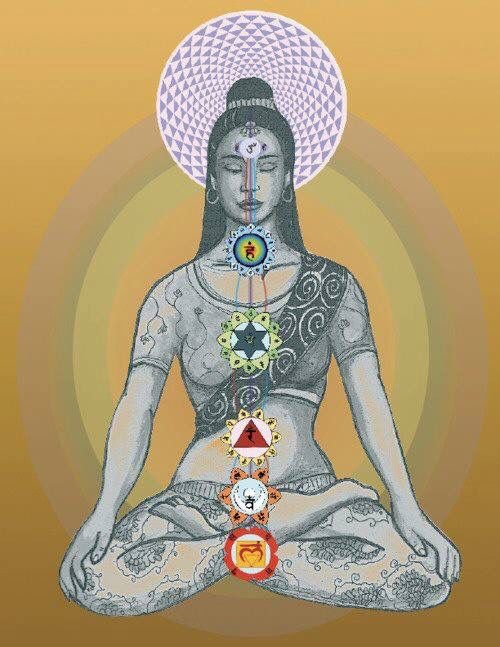Sri Ramana Maharshi: Fixing their minds on psychic centres such as the Sahasrara (the thousand petalled lotus Chakra), yogis remain any lengths of time without awareness of their bodies. As long as this state continues, they appear to be immersed in some kind of joy. But when the mind, which has become tranquil emerges and becomes active again it resumes its worldly thoughts. It is therefore necessary to train it with the help of practices like Dhyana (meditation) whenever it becomes externalized. It will then attain a state in which there is neither subsistence nor emergence.
Question: It is said that the Sakti manifests itself in five phases, ten phases, a hundred phases and a thousand phases. Which is true?
Sri Ramana Maharshi: Sakti has only one phase. If it is said to manifest itself in several phases, it is only a way of speaking. The Sakti is only one.
Question: How to churn up the Nadis (psychic nerves) so that the Kundalini may go up the Sushumna?
Sri Ramana Maharshi: Though the Yogi may have his methods of breath control for his object, the Jnani’s method is only that of enquiry. When by this method the mind is merged in the Self, the Sakti or Kundalini, which is not apart from the Self, rises automatically.
The Yogis attach the highest importance to sending the Kundalini up to the Sahasrara, the brain centre or the thousand petalled lotus. They point out the scriptural statement that the life current enters the body through the fontanelle and argue that, Viyoga (separation) having come about that way, yoga (union) must also be effected in the reverse way. Therefore, they say, we must, by yoga practice, gather up the Pranas (vital force) and enter the fontanelle for the consummation of yoga. The Jnanis on the other hand point out that the yogi assumes the existence of the body and its separateness from the Self. Only if this standpoint of separateness is adopted can the yogi advise effort for reunion by the practice of yoga.
In fact the body is in the mind which has the brain for its seat. That the brain functions by light borrowed from another source is admitted by the yogis themselves in their fontanelle theory. The Jnani further argues: if the light is borrowed it must come from its native source. Go to the source direct and do not depend on borrowed sources. That source is the Heart, the Self.
The Self does not come from anywhere else and enter the body through the crown of the head. It is as it is, ever sparkling, ever steady, unmoving and unchanging. The individual confines himself to the limits of the changeful body or of the mind which derives its existence from the unchanging Self. All that is necessary is to give up this mistaken identity, and that done, the ever shining Self will be seen to be the single non-dual reality.
If one concentrates on the Sahasrara there is no doubt that the ecstasy of Samadhi ensues. The Vasanas, that is the latent mental tendencies, are not however destroyed. The yogi is therefore bound to wake up from the Samadhi because release from bondage has not yet been accomplished. He must still try to eradicate the Vasanas inherent in him so that they cease to disturb the peace of his Samadhi. So he passes down from the Sahasrara to the Heart through what is called the Jivanadi, which is only a continuation of the Sushumna. The Sushumna is thus a curve. It starts from the lowest Chakra, rises through the spinal cord to the brain and from there bends down and ends in the Heart. When the yogi has reached the Heart, the Samadhi becomes permanent. Thus we see that the Heart is the final centre.

